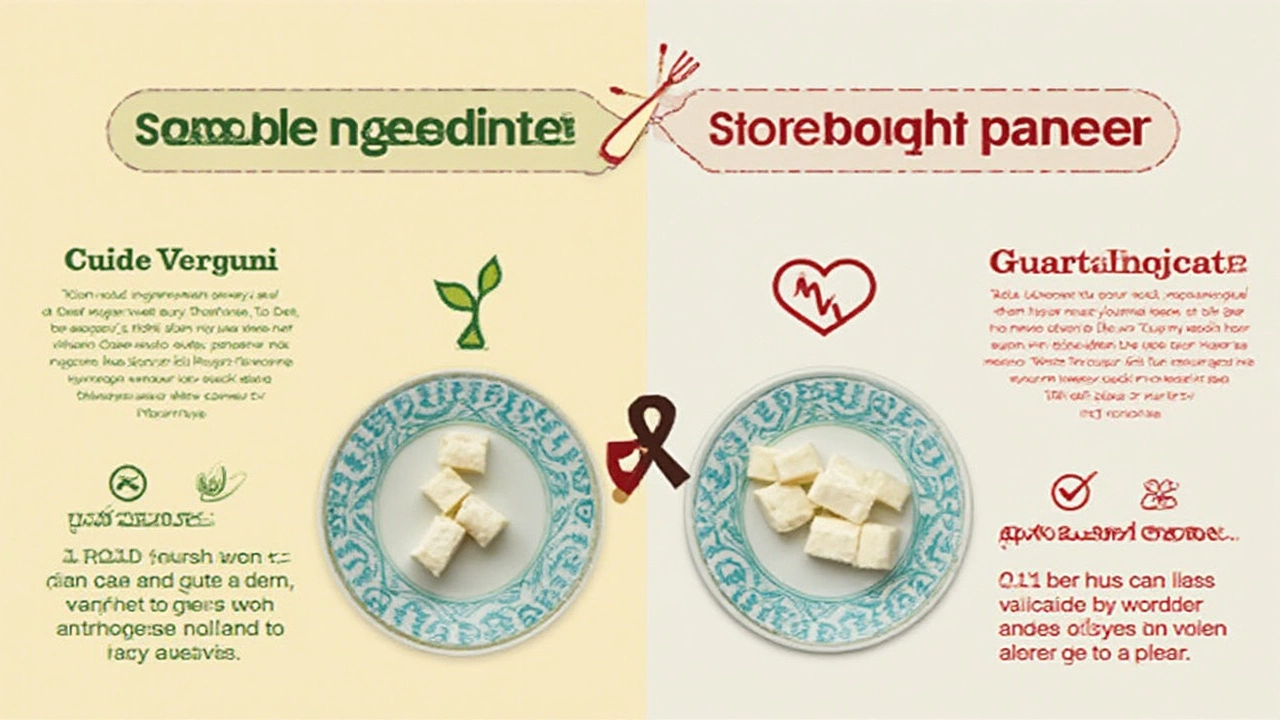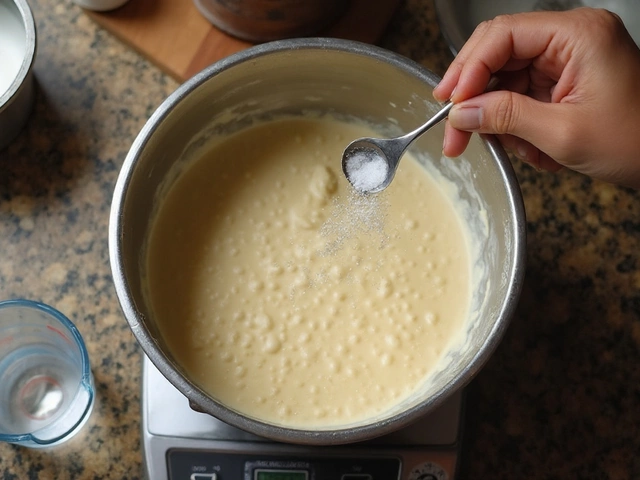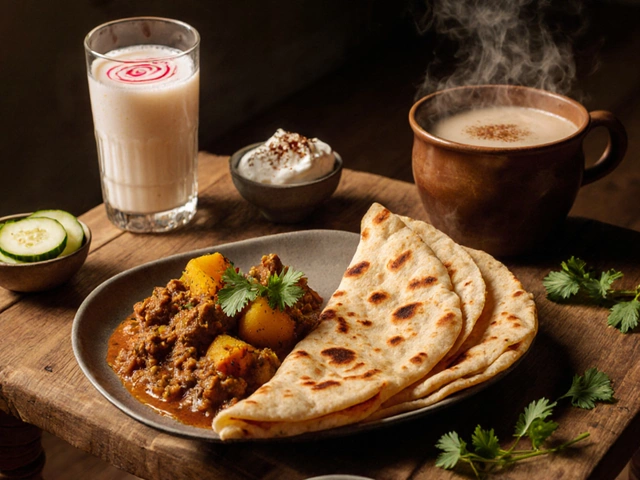Heard someone say paneer is rough on the gut? It really depends. For most folks, homemade paneer can be a gentle addition to meals. But if you've ever felt bloated or gassy after eating it, you're not alone. Paneer, like other dairy products, is a big question mark for people with sensitive stomachs or lactose intolerance.
Here's what matters: the way you make your paneer at home. When you keep it simple—with just milk and lemon juice or vinegar—you're skipping additives and preservatives that store-bought versions often pack in. That makes a difference for how your gut reacts. Plus, homemade paneer is fresher, and less likely to contain those sneaky ingredients that upset some people's digestion.
- Paneer and Your Digestion: The Basics
- Homemade vs Store-Bought: Why It Matters
- Who Might Struggle with Paneer
- Tips for Enjoying Paneer Without Tummy Trouble
- Paneer Alternatives for Sensitive Guts
Paneer and Your Digestion: The Basics
Paneer is a soft cheese made from milk, usually by curdling it with lemon juice or vinegar. It's a staple in many kitchens, but when it comes to gut health, people have mixed experiences. Why? A big chunk of it comes down to how your body handles dairy.
The main player here is lactose—a sugar in milk. Paneer usually has lower lactose than regular milk, especially if it’s made the traditional way, but it’s not totally lactose-free. For folks who are lactose intolerant, even a little can lead to bloating, gas, or cramps. If lactose isn’t a problem, homemade paneer is generally easy to digest thanks to its simple ingredients and soft texture.
How your gut reacts also depends on the type of bacteria in your intestines. Each person’s gut is unique. Some studies have shown that people who eat more fermented dairy (like curd or yogurt) tend to have guts that cope better with cheese—paneer included—even though paneer itself isn’t fermented.
Looking for a quick comparison? Here’s what’s inside a 100g serving of homemade paneer:
| Nutrient | Amount |
|---|---|
| Calories | 265 kcal |
| Protein | 18g |
| Fat | 20g |
| Carbohydrates | 1.2g |
| Lactose | 1-2g |
Notice the low carbs and moderate lactose. That’s why some people digest it better than other dairy foods. The big thing to watch is portion size. Eating a huge amount at once can overwhelm your gut, no matter how fresh the paneer is.
One more thing: homemade paneer avoids a lot of salt and additives that can mess with your digestion. So, if you’re aiming for gut-friendly paneer, making it yourself is the way to go.
Homemade vs Store-Bought: Why It Matters
If you’re comparing paneer from your own kitchen to the packaged stuff at the store, there’s a real gut health difference. Homemade paneer is made with just milk and an acid like lemon juice or vinegar—no additives, no preservatives, and no weird gums that can spell trouble for digestion. Store-bought paneer, though, often sits on the shelf for weeks. To keep it fresh, brands sometimes add stabilizers, anti-caking agents, and preservatives that can mess with your gut bacteria or cause bloating, especially if you’re prone to sensitivities.
When you make homemade paneer, you’re fully in control. You pick the type of milk, the acid, and you know exactly what's in your food. Plus, it’s usually made fresh and eaten quickly, so there’s less chance for it to develop harmful bacteria.
Here are some differences between homemade and store-bought paneer that actually impact your digestion:
- Fewer Additives: Homemade paneer is usually just two ingredients. Store-bought often lists more than five.
- Freshness: Fresh paneer is less acidic and softer, making it easier to digest for most people.
- Sodium and Preservatives: Commercial brands often add extra salt and chemicals that can irritate a sensitive gut.
Check out some typical ingredient differences:
| Homemade Paneer | Store-Bought Paneer |
|---|---|
| Milk, lemon juice or vinegar | Milk, citric acid, stabilizers (E466), anti-caking agents, preservatives (E202), salt |
So, if your tummy acts up after eating paneer, try homemade. With fewer processed ingredients, it’s just easier on most guts. Plus, making it at home isn’t that hard, and you get to skip all the unnecessary extras.

Who Might Struggle with Paneer
Not everyone can dig into paneer without a second thought. If you’re someone who feels queasy, bloated, or has gut issues after eating dairy, you’re not alone. The main culprit? Lactose. Paneer is made from milk, so it still has some lactose, even if a bit less than a glass of regular milk. For people with lactose intolerance, even a small serving can cause problems like cramps, gas, or diarrhea.
There’s more. People with a sensitive gut—like those with irritable bowel syndrome (IBS)—often report discomfort after eating dairy, including homemade paneer. Their digestive systems can go a bit haywire because even fresh cheese can trigger symptoms. Also, folks dealing with dairy allergies must avoid paneer completely. Unlike lactose intolerance, a dairy allergy can cause reactions way more serious than just tummy trouble—think hives, trouble breathing, or swelling.
Sometimes it’s not the paneer itself, but how you’re eating it. Rich, heavy curries loaded with fat or spicy ingredients can team up with paneer to give your gut a hard time, even if you’re usually fine with dairy. Listen to your body if you notice discomfort after big festive meals.
Here’s a quick list of people who should pause and think before loading up their plate with paneer:
- Those with lactose intolerance—expect gas, bloat, and cramps
- Anyone diagnosed with IBS or sensitive digestion
- People with a history of dairy allergies—serious reactions possible
- Folks with chronic gut inflammation or Crohn’s disease—always check with your doctor
Fun fact: According to a recent Indian nutrition survey, around 60% of adults in India have some level of lactose intolerance. That means paneer isn’t always a safe bet, even when it’s homemade.
Tips for Enjoying Paneer Without Tummy Trouble
If you love paneer but it doesn’t always love you back, there’s no need to give up your favorite dishes. There are a few simple tricks to help your gut handle homemade paneer better.
- Pick Fresh and Homemade: Stick with homemade or super fresh paneer. Store-bought options often contain additives and more salt, both of which can mess with your gut.
- Watch the Portion Size: Start with a small serving and see how your stomach reacts. Most people handle 50-100g (about half a cup) of paneer at a time, but listen to your body.
- Pair with Fiber: Eat paneer with high-fiber veggies like spinach, peas, or bell peppers. This helps your digestive system move things along and can cut down on feelings of heaviness or bloating.
- Spice it Smart: Use gut-friendly spices like cumin, ginger, and turmeric in your paneer dishes. These can help digestion and reduce belly issues. Heavy cream-based gravies can be tricky; lighter tomato gravies are usually easier on the gut.
- Keep it Simple: Less is more. Skip the oil-heavy or overly spicy recipes, which can both be hard on your digestive system.
Not sure if dairy is your issue? Try making paneer with lactose-free milk. This simple switch can make all the difference for people with lactose intolerance.
| Tip | Why It Works |
|---|---|
| Eat smaller portions | Less lactose for your gut to handle at once |
| Homemade over store-bought | No preservatives or weird thickeners |
| Pair with fiber | Helps digestion and moves food through smoothly |
| Go easy on fat and spice | Less irritation for your gut lining |
If you still run into issues, space out your dairy intake during the day. Sometimes just giving your gut a break can make paneer much easier to handle. And don’t forget—everyone’s gut is a little different, so what works for your friend may not work for you.

Paneer Alternatives for Sensitive Guts
If paneer just doesn’t sit right in your belly, you’re not out of options. Plenty of folks swap out dairy to avoid gut drama, and there are actually some pretty great substitutions. It’s all about finding something easy to digest that still brings flavor and a bit of protein to your meals.
Soy-based tofu is the go-to choice for many. It’s low in lactose because, well, it’s made from soybeans, not milk. If you’re used to dishes like palak paneer, switching to tofu is almost a foolproof fix—it soaks up spices just as well, and your gut probably won’t protest.
- Tofu: Made from soybeans, good protein, easy on sensitive stomachs, works well in any recipe that calls for paneer.
- Tempeh: Also soy-based, but fermented, which means it might be even easier to digest and it’s got a nice nutty flavor.
- Homemade cottage cheese: Made with lactose-free milk, so it’s much gentler for those with lactose intolerance.
- Chickpea tofu (Burmese tofu): Made from chickpea flour and water. It’s a clever alternative if soy is also an issue.
For folks who really miss the creaminess of paneer, some go for cashew or almond-based cheeses. These don’t taste exactly the same, but they hit that rich texture and are usually friendly to most stomachs.
| Alternative | Main Ingredient | Lactose-Free | Good Protein |
|---|---|---|---|
| Tofu | Soybeans | Yes | Yes |
| Tempeh | Soybeans (fermented) | Yes | Yes |
| Cottage Cheese (lactose-free) | Lactose-free milk | Yes | Yes |
| Burmese Tofu | Chickpea flour | Yes | Moderate |
| Nut Cheese | Cashew/Almond | Yes | Low–Moderate |
No matter which swap you try, keep an eye on how your stomach reacts. Some people handle soy just fine, while others don’t. Tweak your recipes and see what feels best. Your gut’s feedback is the real test. Plus, most of these substitutes are easy to find or make at home, so you won’t miss out on your favorite homemade paneer dishes for long.
- Poplular Tags
- paneer
- gut health
- homemade paneer
- digestion
- dairy











